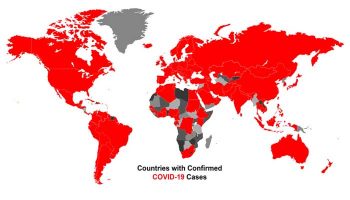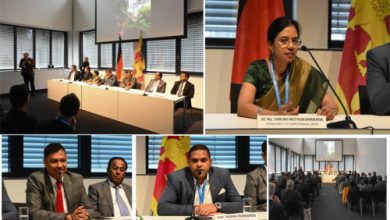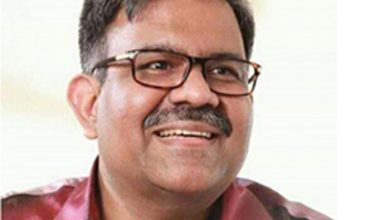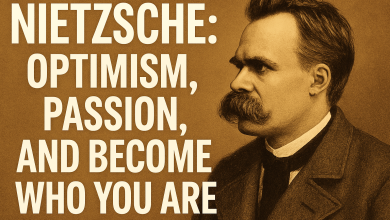Rebreeding a Nation: Power, Science & Spirit Behind Sri Lanka’s Livestock Revolution
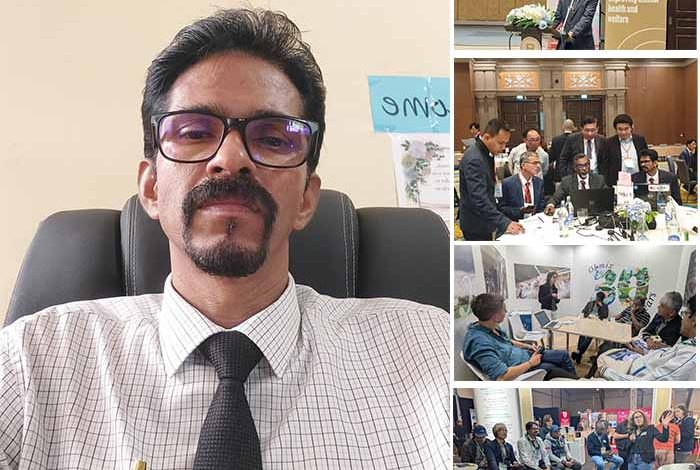
An Exclusive Interview with Dr. B.M.M. Ekanayake
Director of Animal Breeding – Department of Animal Production and Health (DAPH)
Presented by Ceylon Digest
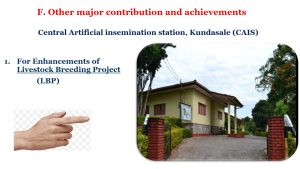

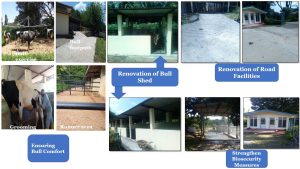
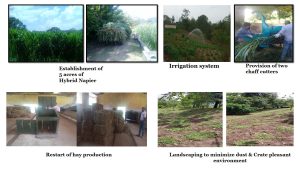
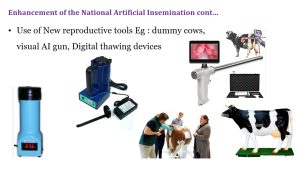

As Sri Lanka navigates a complex era of economic recovery, climate adaptation, and youth reinvention, a quiet yet powerful transformation is underway—deep in the heart of its agricultural lands. Often overshadowed by policy debates or urban priorities, livestock breeding is emerging as a pivotal force in rebuilding rural dignity, ensuring national food security, and reviving traditional knowledge through modern science.
At the forefront of this revolution stands Dr. B.M.M. Ekanayake, the Director of Animal Breeding at the Department of Animal Production and Health (DAPH). With decades of experience spanning grassroots genetics, national policymaking, and global agricultural trends, Dr. Ekanayake has become a guiding force in steering Sri Lanka’s livestock sector into the future—one animal, one farmer, one breakthrough at a time.
In this exclusive interview with Ceylon Digest, he opens up about the intersections of science and spirit, data and heritage, and why he believes that “rebreeding the nation” is not just a metaphor, but a mission to empower rural communities, protect biodiversity, and cultivate a new generation of agri-leaders.
Q&A INTERVIEW
Q1:
Doctor, if we were to trace the roots of your journey—not just professionally but personally—what childhood experiences or cultural elements first drew you toward animal breeding and the world of livestock?
Dr. Ekanayake:
[Answer] Actually I did not have much experience on animal breeding in my childhood. But during my master degree in India for two years and six weeks training in New Zealand, I realized the important of animal breeding on dairy development. Breeding is not just a breeding of animals but it should be a selective breeding. I just wanted to get the responsibility to improve the livestock genetics by which improve the livestock productivity towards the self-sufficiency.
Q2:
Was there a turning point or defining moment in your early life when you felt a deep calling toward working with animals, particularly with a vision of nation-building through agriculture and livestock?
Dr. Ekanayake:
[Answer] Actually Since my childhood I am a animal lover. As I am from rural village, I used to keep cats and dogs at all the time and also my family owned a big land in which a herd of cattle was semi-intensively managed. I experienced all the stages of cattle. Not like today, no veterinary facilities available in those days. I experienced the difficulty of finding a Veterinary surgeon when animals get sick. All these incidences drew me to be a Veterinary Surgeon.
Q3:
Livestock farming in Sri Lanka is more than just an industry—it’s woven into our rural identity and culture. How do you see animal breeding as a custodian of our environmental heritage and village-based wisdom?
Dr. Ekanayake:
[Answer]Exactly. Livestock farming especially dairy farming in Sri Lanka scattered all over the country based in rural villages. Around 92% of the milk supply to the national grid by the small holder farmers rearing 2-5 animals. They are running the operation in subsistence level rather than entrepreneurs.
Q4:
Could you speak about how breeding, especially using indigenous genetics, aligns with the broader goals of sustainability, climate resilience, and food security in Sri Lanka?
Dr. Ekanayake:
[Answer]Yes our main target is cross breeding program in small and medium scale farms. We use to implement genetic improvement in indigenous animals cross with European breeds and genetically improved boss indicus breeds according to the national livestock breeding policy in Sri Lanka
Q5:
There’s rising global interest in “agri-tourism” and “eco-heritage tourism.” How feasible is it to position places like Kundasale or Imbulandanda as immersive, Animaya-style animal breeding tourism hubs—where culture, science, and nature converge?
Dr. Ekanayake:
[Answer]Yes this is a good idea which may be attractive for tourists as well as children.
Q6:
Could showcasing our livestock breeding centers as living museums of biodiversity and scientific excellence contribute to Sri Lanka’s tourism strategy?
Dr. Ekanayake:
[Answer]Strict biosecurity measures to be maintained in Breeding centers but it can be implemented in organized commercial farming system.
Q7:
How do you envision breeding as a business—not just as a profession for scientists but as a scalable entrepreneurship model for youth and rural farmers?
Dr. Ekanayake:
[Answer]Yes breeding is a scalable entrepreneurship model because there is huge demand for breeding materials but difficult to find out good breeding materials having expected quality.
Q8:
What policy or practical interventions are currently in place to help grassroots entrepreneurs—especially women and youth—start sustainable livestock breeding businesses?
Dr. Ekanayake:
[Answer]Yes present government has taken very strong and important steps to transform subsistence level farmers in to entrepreneurs through “dairy hub model “by which we expect to increase our national milk production from 370 million liters to 1250 million liters by the year 2030.
Q9:
How can animal breeding be a tool for reversing rural migration and creating dignified rural livelihoods, especially in economically vulnerable districts?
Dr. Ekanayake:
[Answer]Well, once the animal breeding improvement is established, productivity goes up and finally it may become a profitable business then young entrepreneurs will attract farming and then rural migration will minimize.
Q10:
With programs like the Pedigree and Performance Recording Scheme (PPRS) and the integration of AI (Artificial Insemination), how is Sri Lanka shaping the future of genetic excellence in livestock?
Dr. Ekanayake:
[Answer]Yes we are planning to expand the PPRS program since 2026. By this program we expect to produce and select good quality bull mothers and bull calves for future semen donor bulls and stud service for large herds.
Q11:
What emerging technologies—such as artificial intelligence, IoT, or biotech—are being considered for the next decade of breeding and disease prevention?
Dr. Ekanayake:
[Answer] “Although there are no immediate plans to integrate artificial intelligence in the next decade, artificial insemination has long been a foundational biotechnological tool in our work. Beginning in 2026, we plan to introduce embryo transfer as a more advanced and progressive application of biotechnology.”
Q12:
Would you support the creation of National Breeding Research & Innovation Hubs—a kind of ‘Agritech Park’—to serve as incubators for research, startups, and farmer training?
Dr. Ekanayake:
[Answer]At present no extensive breeding research program implementing. There is heavy need to have farm animal research institute in Sri Lanka.
Q13:
Disease outbreaks—especially zoonotic ones—threaten not just livestock but global health. Could you explain the role of wildlife disease surveillance in safeguarding both our economy and human health?
Dr. Ekanayake:
[Answer]Yes. wildlife disease surveillance is very important because maintain of sylvatic cycle is a big bottleneck for disease control programs.
Q14:
How is Sri Lanka handling emerging threats like Avian Influenza and Newcastle Disease to protect both the export economy and domestic food security?
Dr. Ekanayake:
[Answer]As a department we have taken every step to prevent entrance of HPAI . DAPH is in the process of zonal declaration of NCD by which doors will open the export market.
Q15:
What’s the Department’s current strategy to connect farmers to domestic and international markets—not just in milk and meat, but also in genetics, live animals, and breeding services?
Dr. Ekanayake:
[Answer]Yes a suggestion is tabled to hold livestock exhibitions and livestock competitions. Farmer to farmer learning is a good tool for livestock extension.
Q16:
How can private-public partnerships accelerate market access and branding of Sri Lankan livestock products globally?
Dr. Ekanayake:
[Answer]PPP model may leads to rapid development of livestock industry.
Q17:
If a young dreamer from a small Sri Lankan village wants to start a farm—from goats to genetics—what first three steps would you advise them to take?
Dr. Ekanayake:
[Answer]Awareness, planning and implementation.
Q18:
What’s your message to young Sri Lankans who might still see farming as “old-fashioned,” rather than futuristic and purpose-driven?
Dr. Ekanayake:
[Answer]I invite young Sri Lankans to come forward and start up farming with new technology. DAPH is always ready to deliver the new technology for young entrepreneurs.
Q19:
As Director of Animal Breeding, what is the legacy you hope to leave behind—for the industry, for science, and for the generations to come?
Dr. Ekanayake:
[Answer]To assure the food security through increase livestock products specially dairy products via genetic improvement
Q20:
Can you share your vision of what Sri Lanka’s livestock sector could look like in 2040, and how breeding will shape our nation’s economic and nutritional destiny?
Dr. Ekanayake:
[Answer]At the moment we have prepared 15 years breeding plan to continuous breeding improvement by which we expect to self sufficiency in milk as a final outcome of our effort.
This in-depth dialogue with Dr. B.M.M. Ekanayake reveals far more than technical strategies or policy plans—it unveils a visionary blueprint for how a nation can rise from its roots.
What Dr. Ekanayake presents is a future where farming is not a fallback, but a frontier. Where a village youth doesn’t just raise cattle—but manages genetics, integrates AI, and hosts eco-tourists in an Animaya-style breeding center. Where disease prevention, market access, and climate resilience aren’t treated as isolated challenges but are woven together through a thoughtful, research-driven approach to breeding.
This is not just about improving milk yields or meat quality—it’s about reclaiming national pride in local breeds, empowering generational entrepreneurship, and aligning Sri Lanka’s rural soul with its scientific ambition.


